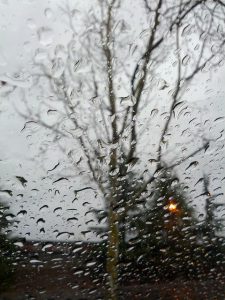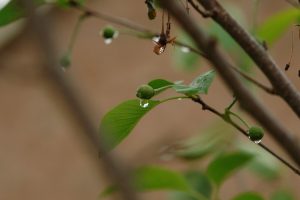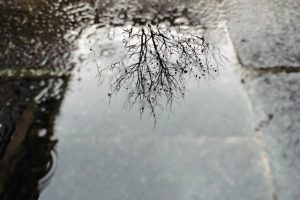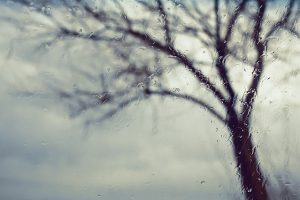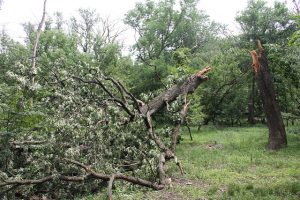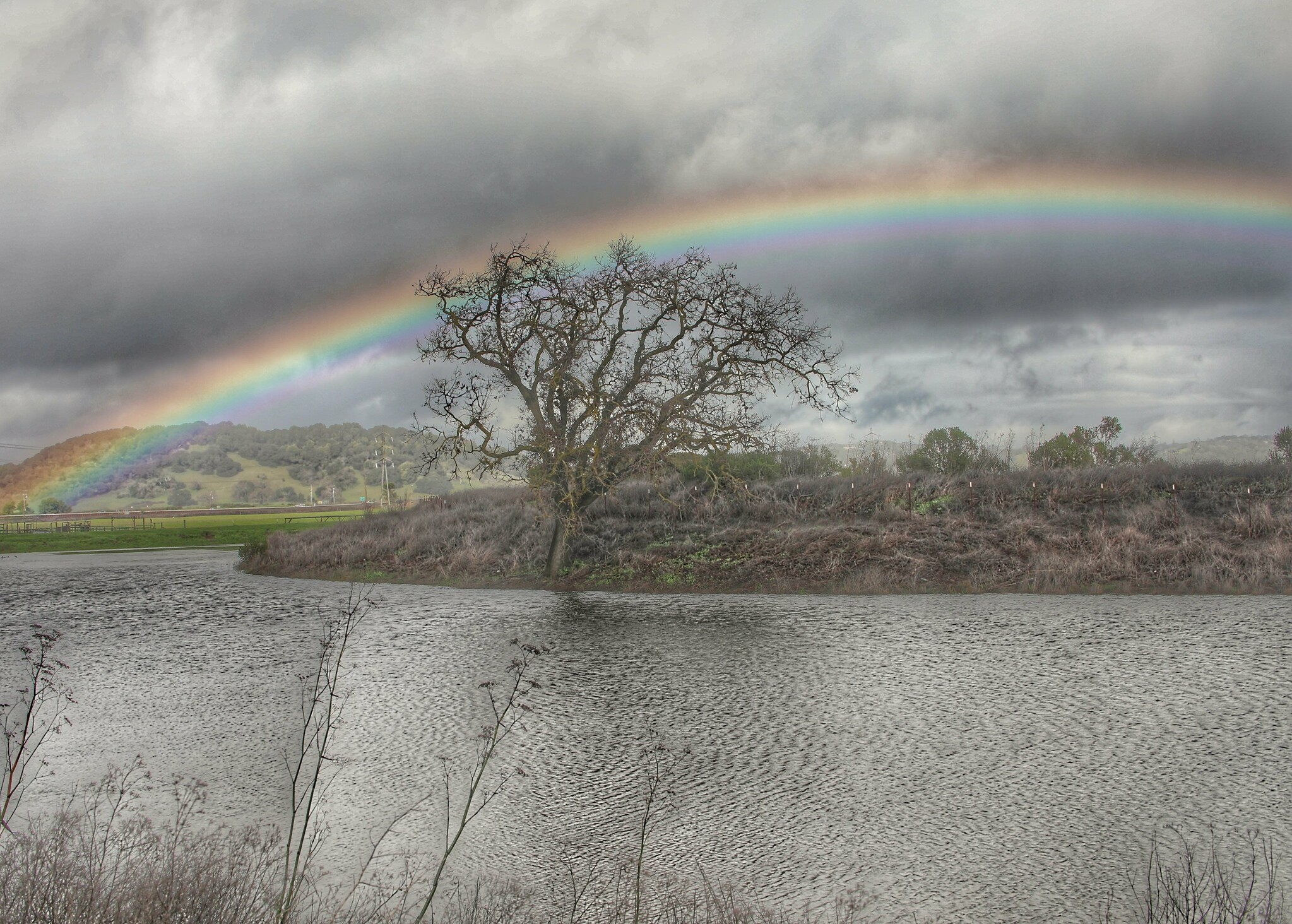
As we enter into the spring months, it is getting wetter and wetter. Drenching rains and thunderstorms might be good for certain plants, there are some problems when it comes to certain trees and when there is an unusual amount of rain.
For many regions, especially those where the soils are porous and drainage is better, heavy rain isn’t as much of a concern. However, some of the soil here in Peterborough cannot handle the heavy bouts of rain that repeatedly hit us without a great deal of consequences for our trees and landscaping.
Compaction, water logging, oxygen depletion, nutrition problems, erosion, and heaving are just a few of the problems that can emerge from too much rain.
So what can you do to prevent these issues from occurring?
Remove Excess Mulch
- Make sure there is no compaction under mulch
- Keep it in place, just move it away
- Can hide some of the effects
Generally, putting mulch around your trees is a good thing, according to The Spruce. This is especially true during the warmer and colder months, when the mulch can act as a buffer for the temperature changes. However, when it is raining too much, mulch can allow for build up around the root system, which can cause root rot.
By moving the mulch away from the trunk of the tree (it doesn’t have to be far, it just cannot touch it), you are greatly reducing the risk of root rot and other potential problems.
Stop Irrigating So You Don’t Add To The Problem
- Make sure to monitor irrigation
- You may need to measure soil levels
- Don’t forget to turn it back on after storms
When there is already a lot of water in the ground, irrigating your trees will just add to the problem and waste one of most precious resources. If you see many storms in the coming weeks, you may want to cut back on the irrigation. If possible, you could even start collecting water in a barrel so that you can use it for other purposes.
According to Gardeners, “The amount of water a tree needs depends on many factors, including the age and species of the tree, the time of year, weather and soil type. As a rule, newly planted and young trees require more frequent watering than older, well-established trees. But during extended periods of drought, all trees benefit from supplemental watering.”
The important thing to remember is that you do need to turn that irrigation system back on – especially in summer when the ground can dry out fairly quickly.
Aerate The Soil
- Puts water to use
- Prevents compaction
- Allows for water to penetrate into roots
When you aerate the soil, you are putting small holes into it so that water and nutrients can penetrate the soil. If we are getting a lot of rain, that is actually the perfect time to aerate, according to soil professionals Pennington: “Aerating is easiest on you (or your equipment operator) and your lawn when your soil is moist from irrigation or rainfall the day before. Overly dry soil can be tough to aerate, so moisture eases the process. Never aerate overly wet lawns; wait a few days instead.”
In general, this is something you should not do on your own – it isn’t easy and requires a practiced touch. This is especially true if you are going to do it around your tree’s roots, as you don’t want to puncture them.
Make Sure Tree Gets Nutrients
- Some nutrients are carried away in the water
- Trees can’t always get nutrients when they are water logged
- Check soil after a lot of water
After a lot of rain, there is a tendency for the composition of the soil around trees to change. This could be for a few reasons, but mainly because the nutrients that naturally occur in your yard can be carried away by water. If you have a lot of pooling or there was water actually running around the trees, this is quite common.
Another problem is that chemicals can be carried onto the trunk of the tree, which can poison it. You want to check if the tree looks healthy and ensure that the roots have access to the water and nutrients. Soil compaction can occur, which is why aeration is so important.
Finally, there is a chance that your soil composition will change if it receives heavy rainfall, so you want to test it for all of the nutrients that it needs, according to Tree Help.
Brace or Cable The Trees
- Large amounts of rain can bring trees down
- Cabling can help vulnerable spots
- Reduces risks to structures
Many of us worry about the damage that a tree can bring as a result of a storm more than the damage a storm can do to a tree. We worry about trees tumbling and knocking into our homes, crushing our cars, and bringing down electrical lines.
If there are storms in the forecast and you are worried about your trees, whether they be diseased and weak or newly planted, you may want to cable them. The definition of cabling, according to The Spruce, is ” use of cables to stabilize an established tree growing in a manner that is not sustainable if left uncorrected.” Cables can add stability to your trees during a severe storm.
However, cabling isn’t always in a tree’s best interest, so you may want to contact a professional with any concerns.
If you are looking for a tree care professional in Southern Ontario, give Van Till Tree Care a call today at (705) 653-3777. We will help you to better understand your trees and advise you on particular issues such as green spots, pruning trouble, or soil problems. We can help you with many other issues that you might find among your trees – from the very top of the tree to the roots.

